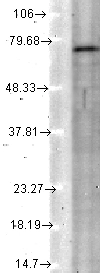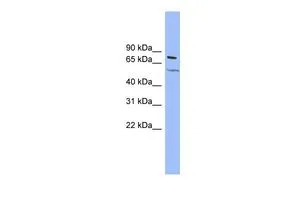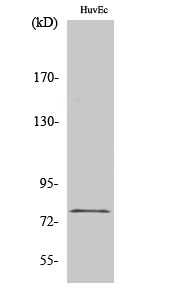![ICC/IF analysis of 4% PFA fixed SH-SY5Y cells using GTX41990?KCNQ4 antibody [S43-6]. Green : Primary antibody Red : F-Actin Blue : Hoechst Dilution : 1:100 ICC/IF analysis of 4% PFA fixed SH-SY5Y cells using GTX41990?KCNQ4 antibody [S43-6]. Green : Primary antibody Red : F-Actin Blue : Hoechst Dilution : 1:100](https://www.genetex.com/upload/website/prouct_img/normal/GTX41990/GTX41990_20240719_ICCIF_24072118_521.webp)
ICC/IF analysis of 4% PFA fixed SH-SY5Y cells using GTX41990?KCNQ4 antibody [S43-6]. Green : Primary antibody Red : F-Actin Blue : Hoechst Dilution : 1:100
KCNQ4 antibody [S43-6]
GTX41990
ApplicationsImmunoFluorescence, ImmunoPrecipitation, Western Blot, ImmunoCytoChemistry, ImmunoHistoChemistry, ImmunoHistoChemistry Frozen, ImmunoHistoChemistry Paraffin
Product group Antibodies
TargetKCNQ4
Overview
- SupplierGeneTex
- Product NameKCNQ4 antibody [S43-6]
- Delivery Days Customer9
- Application Supplier NoteWB: 1:1000. ICC/IF: 1:100. IHC-P: 1:1000. IHC-Fr: 1:1000. *Optimal dilutions/concentrations should be determined by the researcher.Not tested in other applications.
- ApplicationsImmunoFluorescence, ImmunoPrecipitation, Western Blot, ImmunoCytoChemistry, ImmunoHistoChemistry, ImmunoHistoChemistry Frozen, ImmunoHistoChemistry Paraffin
- CertificationResearch Use Only
- ClonalityMonoclonal
- Clone IDS43-6
- Concentration1 mg/ml
- ConjugateUnconjugated
- Gene ID9132
- Target nameKCNQ4
- Target descriptionpotassium voltage-gated channel subfamily Q member 4
- Target synonymsDFNA2, DFNA2A, KV7.4, potassium voltage-gated channel subfamily KQT member 4, potassium channel KQT-like 4, potassium channel subunit alpha KvLQT4, potassium channel, voltage gated KQT-like subfamily Q, member 4, potassium voltage-gated channel, KQT-like subfamily, member 4
- HostMouse
- IsotypeIgG1
- Protein IDP56696
- Protein NamePotassium voltage-gated channel subfamily KQT member 4
- Scientific DescriptionThe protein encoded by this gene forms a potassium channel that is thought to play a critical role in the regulation of neuronal excitability, particularly in sensory cells of the cochlea. The current generated by this channel is inhibited by M1 muscarinic acetylcholine receptors and activated by retigabine, a novel anti-convulsant drug. The encoded protein can form a homomultimeric potassium channel or possibly a heteromultimeric channel in association with the protein encoded by the KCNQ3 gene. Defects in this gene are a cause of nonsyndromic sensorineural deafness type 2 (DFNA2), an autosomal dominant form of progressive hearing loss. Two transcript variants encoding different isoforms have been found for this gene. [provided by RefSeq, Jul 2008]
- Storage Instruction-20°C or -80°C,2°C to 8°C
- UNSPSC12352203

![IHC-P analysis of human hippocampus tissue using GTX41990?KCNQ4 antibody [S43-6]. Dilution : 1:1000 IHC-P analysis of human hippocampus tissue using GTX41990?KCNQ4 antibody [S43-6]. Dilution : 1:1000](https://www.genetex.com/upload/website/prouct_img/normal/GTX41990/GTX41990_20240719_IHC-P_24072118_265.webp)
![IHC-Fr analysis of mouse brain tissue using GTX41990 KCNQ4 antibody [S43-6]. Dilution : 1:1000 IHC-Fr analysis of mouse brain tissue using GTX41990 KCNQ4 antibody [S43-6]. Dilution : 1:1000](https://www.genetex.com/upload/website/prouct_img/normal/GTX41990/KCNQ4-antibody-S43-6_IHC_GTX41990-1_w_23060820_295.webp)








